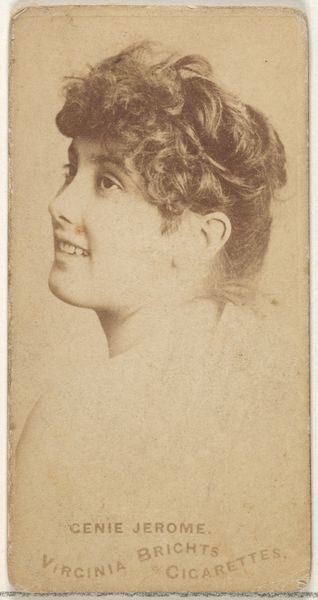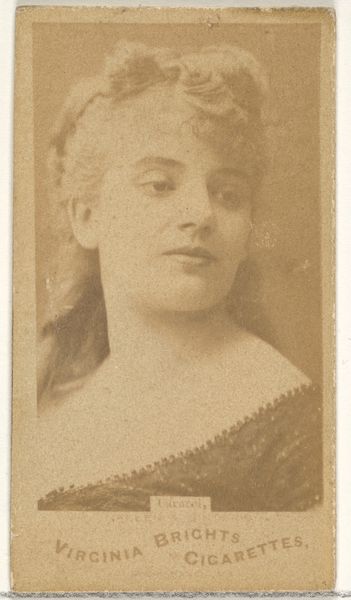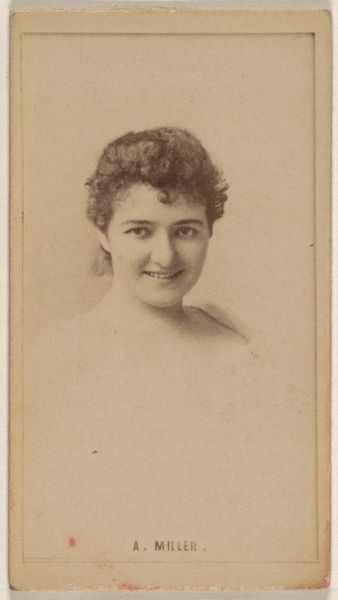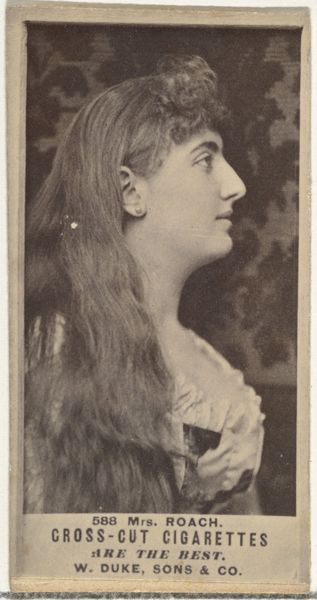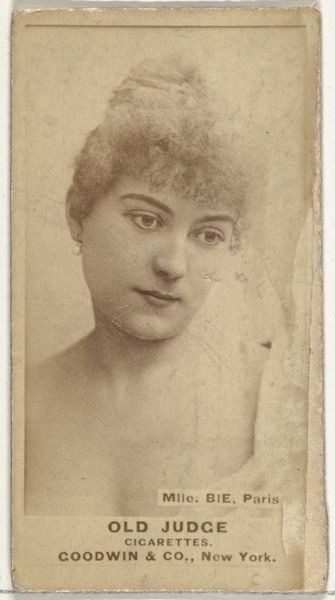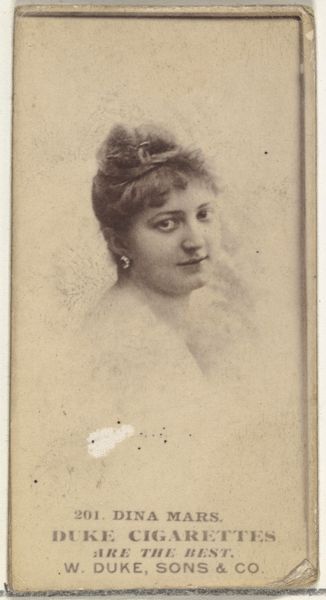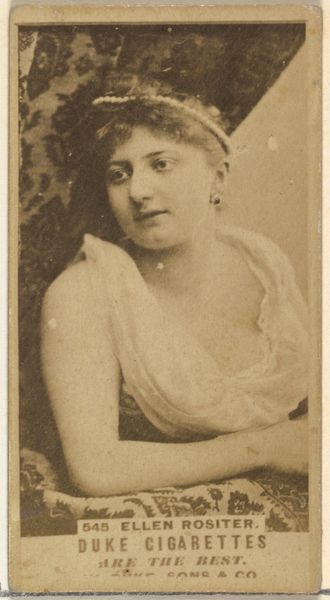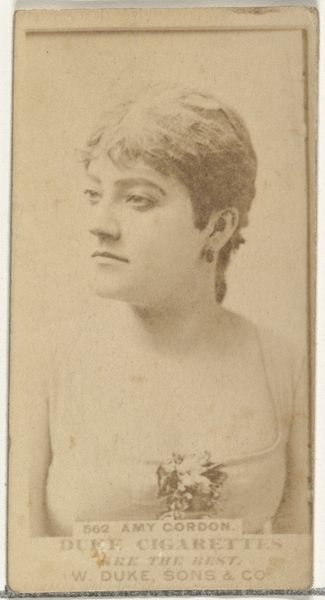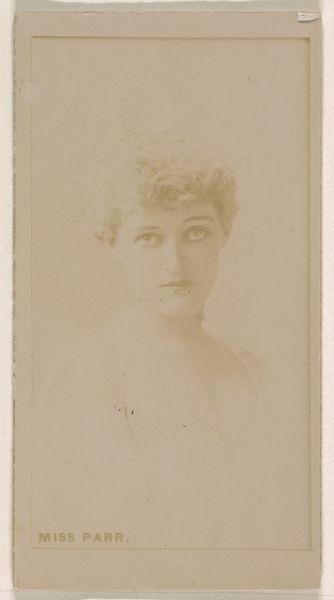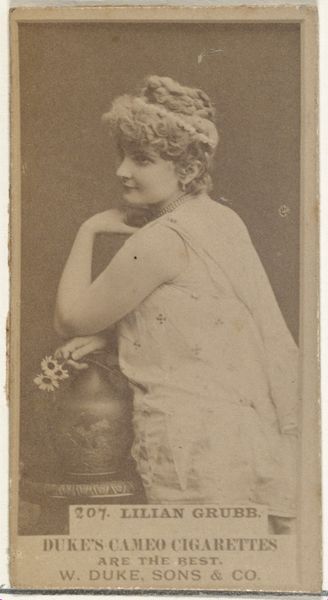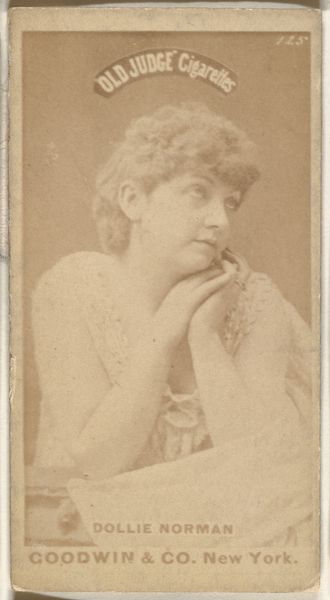
French Beauty, from the Actors and Actresses series (N145-7) issued by Duke Sons & Co. to promote Duke Cigarettes 1880s
0:00
0:00
drawing, print, photography
#
portrait
#
drawing
# print
#
photography
#
realism
Dimensions: Sheet: 2 11/16 × 1 3/8 in. (6.8 × 3.5 cm)
Copyright: Public Domain
Curator: Here we have "French Beauty," a piece from the Actors and Actresses series (N145-7), published in the 1880s by W. Duke, Sons & Co. as a promotional item for Duke Cigarettes. Editor: It has a lovely, almost ephemeral quality. The sepia tones create a soft focus that makes the subject appear like a memory or a dream. Curator: Precisely. These were originally distributed with cigarette packs. Think about the implications of mass production and distribution on these early forms of consumer culture. Editor: Interesting, considering it's a photographic print intended as art, but actually functioning as advertising. The subject gazes upwards, suggesting perhaps aspiration or hope. What can we interpret from this directional choice? Curator: In a society undergoing mass consumerism, images of desirable women served as symbols of status. Here we have this "French Beauty," strategically positioned to endorse the Duke brand through this kind of aspirational identification. The materials themselves become intertwined with the cultural values they promote. Editor: It’s interesting to consider the gaze as a symbol of that desire. The subject isn’t looking at us; instead, we are observing her. The artist—or perhaps more accurately, the company—positions the consumer in a role of aspiration. What does it mean to desire what this "French Beauty" represents? And to obtain that through cigarettes? Curator: The printing process itself plays a role. The uniformity achieved in the production suggests the standardization of beauty, manufactured on a commercial scale for a consumer audience. It reflects the evolving labor practices behind artistic reproduction in the late 19th century. Editor: So, from your perspective, this is less about individual artistry and more about how social and commercial structures produced a concept of feminine beauty. Curator: Absolutely. Understanding the historical and economic conditions provides more than just what we're looking at—we understand *why* and *how* we're looking at it. Editor: I find myself dwelling on her enigmatic smile and upward glance, seeing her as a cipher, embodying aspirations and the seductive power of image-making. Curator: Right. It's a fascinating interplay of art, industry, and the emerging world of consumerism. Editor: Yes, definitely food for thought—and perhaps, reason to put down that cigarette.
Comments
No comments
Be the first to comment and join the conversation on the ultimate creative platform.
